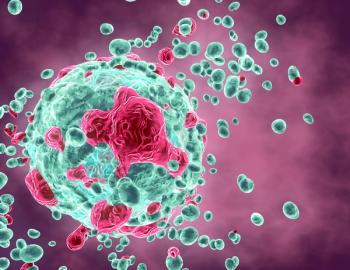
LY3023414 Demonstrates Manageable Safety Profile in Patients with Endometrial Cancer
The dual PI3K/mTOR inhibitor LY3023414 also displayed moderate single-agent activity in this study of patients with heavily pretreated advanced endometrial cancer.
In patients with heavily pretreated advanced endometrial cancer prospectively selected for tumors with activating PI3K pathway mutations, LY3023414 demonstrated modest single-agent activity and a manageable safety profile, according to a study published in Cancer.
This phase II study demonstrated that to enhance efficacy, future studies evaluating the combination of PI3K pathway inhibitors with a ketogenic diet or SGLT2 inhibitors in PI3K pathway altered endometrial carcinomas and carcinosarcomas are both warranted and currently planned.
“Because the incidence in endometrial cancer incidence is closely related to lifestyle factors, such as obesity and insulin resistance, strategies to lower insulin signaling and inhibit PI3K pathway activation are particularly attractive,” the authors wrote.
In this study of 28 patients with advanced endometrial cancer of any grade treated with LY3023414, a dual PI3K/mTOR inhibitor, histologies included endometroid (39%), carcinosarcoma (25%), serous (21%), and mixed (14%). The patients were heavily pretreated with a median of 2 prior cytotoxic lines (range, 1-3), and the most common alterations involved PIK3CA (68%), PTEN (43%), and PIK3R1 (32%).
Twenty-five of the 28 participants were efficacy-evaluable patients, and within this cohort the ORR was 16% (90% CI, 7%-100%) and the clinical benefit rate was 28% (90% CI, 16%-100%). Four of the patients had a confirmed partial response, 2 of which lasted for >9 months. The median progression-free survival and overall survival were 2.5 months (95% CI, 1.2-3.0) and 9.2 months (95% CI, 5.0-15.9), respectively.
The most common all-grade treatment-related adverse events reported were anemia (71%), hyperglycemia (71%), hypoalbuminemia (68%), and hypophosphatemia (61%). There was no correlation observed between molecular alterations and response.
The researchers explained that LY3023414 suppresses DNA-PK, a member of the PIKK superfamily that mediates AKT phosphorylation and activation, detection, and repair of DNA double-strand breaks by way of the nonhomologous end-joining pathway. “Overactivation of DNA-PK in cancers can result in resistance to anti-cancer therapy,” the authors wrote. “Inhibition of DNA-PK is a promising anticancer target, and this additional activity rendered LY3023414 highly attractive to investigate in advanced endometrial cancer.”
The data presented provides additional evidence that baseline clinical characteristics and individual genomic biomarkers are still limited in their ability to accurately predict response to PI3K pathway inhibitors in endometrial cancer. The results also further emphasize the immense challenge of implementing clinical strategies to successfully target this pathway. In spite of the overall disappointing results, researchers noted that the clinical benefit rate of 24% achieved in this study compares somewhat favorably to recent studies of other PI3K pathway inhibitors in endometrial cancer.
According to the study, the incidence and mortality of endometrial cancer are increasing at a rate of 1.3% and 1.6% per year, respectively. Additionally, endometrial carcinomas are among the tumor types with the highest frequency of genomic activation of the PI3K/mTOR pathway. More specifically, alterations in PTEN, PIK3CA, and PIK3R1 develop in endometrial carcinomas at estimated frequencies of 65%, 50%, and 31%, respectively, with variations contingent on numerous cohort factors.
Reference:
Rubinstein MM, Hyman DM, Caird I, et al. Phase 2 Study of LY3023414 in Patients With Advanced Endometrial Cancer Harboring Activating Mutations in the PI3K Pathway. Cancer. doi:10.1002/cncr.32677.
Newsletter
Stay up to date on recent advances in the multidisciplinary approach to cancer.

























































































